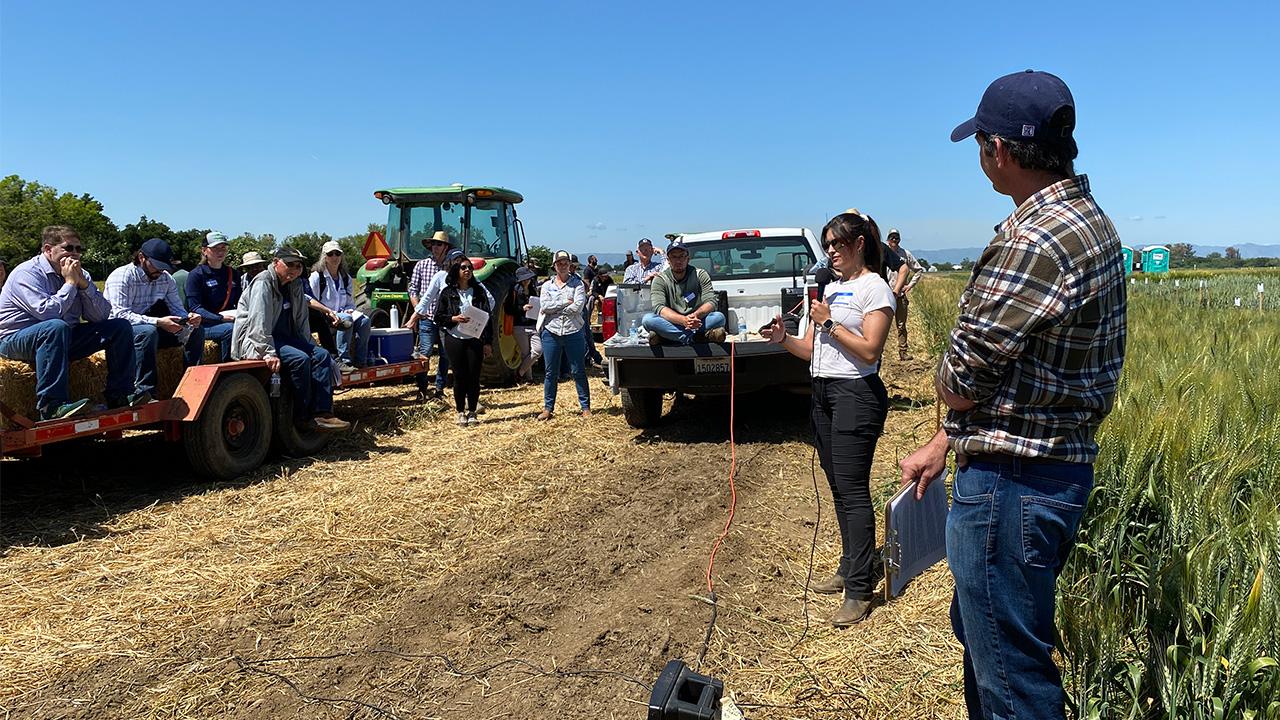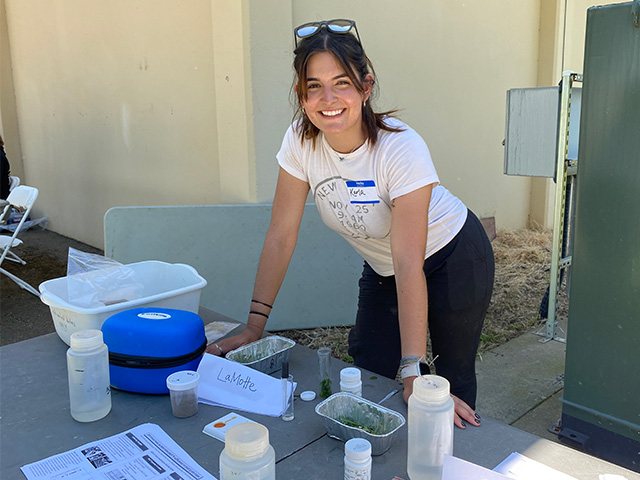
DIY nitrogen test helps farmers boost yield, save money
Estrada demos process at Small Grains Field Day
Farmers can use an easy, on-farm test to figure how much nitrogen their crops need, saving money on fields that already have plenty of the nutrient and boosting production on fields that don’t. Warning: Special equipment you’ll need includes a pair of scissors and a garlic press.
Junior specialist Karla Estrada, working with Cameron Pittelkow and Mark Lundy in the UC Davis Department of Plant Sciences, led the evaluation of several DIY tests. Armed with a plastic bag of dried plant material and a dropper full of enzymes, she recently showed how easy it is to use.

Estrada recommended that farmers use a large handful of plant material from the field they want to test, including leaves and stems, and run the samples soon after collecting or store them in a refrigerator.
Instructions for the DIY nitrogen tissue test are here: DIY Nitrogen Tissue Test.pdf
When farmers know how much nitrogen a field does or doesn’t need, they can apply just enough fertilizer to grow more crops, yet save money by applying no more, according to research by a team from the Department of Plant Sciences and UC Cooperative Extension.
In trials over three years from 2019 to 2022, they found that applying just the right amount of fertilizer boosted yields by 28 percent, on average, in fields where soils lacked enough of the nutrient. In fields where nitrogen already was sufficient, farmers saved an average of $36 per acre on fertilizer costs, the scientists reported.
Plants need nitrogen to grow, so it's a key ingredient in fertilizer for crops. But it can be too much of a good thing: Pollution from applying too much agricultural nutrients, mainly nitrogen and phosphorus, “is one of America's most widespread, costly and challenging environmental problems,” according to the United States Environmental Protection Agency. Nitrogen pollution also is linked to breathing and other health problems in people, including potentially fatal “blue baby” syndrome. That’s on top of water and air pollution, loss of habitat diversity, red tides, fish kills and climate warming that makes heat waves hotter and storms more severe.
Lundy and team: Tools for nitrogen fertilizer management
Estrada demonstrated the DIY nitrogen test during the 2023 UC Davis Small Grains and Alfalfa/Forages Field Day, held May 11 near Davis. Nitrogen and how to reduce its use in agriculture was a recurring theme in the research presented.
Lundy and a team of researchers at UC Davis and UC Cooperative Extension have pulled together tools to help farmers get the most out of their nitrogen fertilizer in wheat and other small grains. The tools are the product of many years of UC research and include site-specific recommendations for nitrogen fertilizer application.
Get the tools for nutrient management here.
Both farmer and the environment benefit from these proven practices, the researchers said, including gains I crop productivity, savings in fertilizer and reducing pollution from nitrogen.
Related links
DIY Nitrogen Tissue Test instructions: DIY Nitrogen Tissue Test.pdf
More Field Day: Recycled green waste offers alternative to fertilizer
Nitrogen Fertilizer Management Tool for California Wheat
UC Small Grains Research and Information Center
Read more about UC's new tools for nitrogen management
Media Resources
Trina Kleist, UC Davis Department of Plant Sciences, tkleist@ucdavis.edu, (530) 754-6148 or (530) 601-6846
